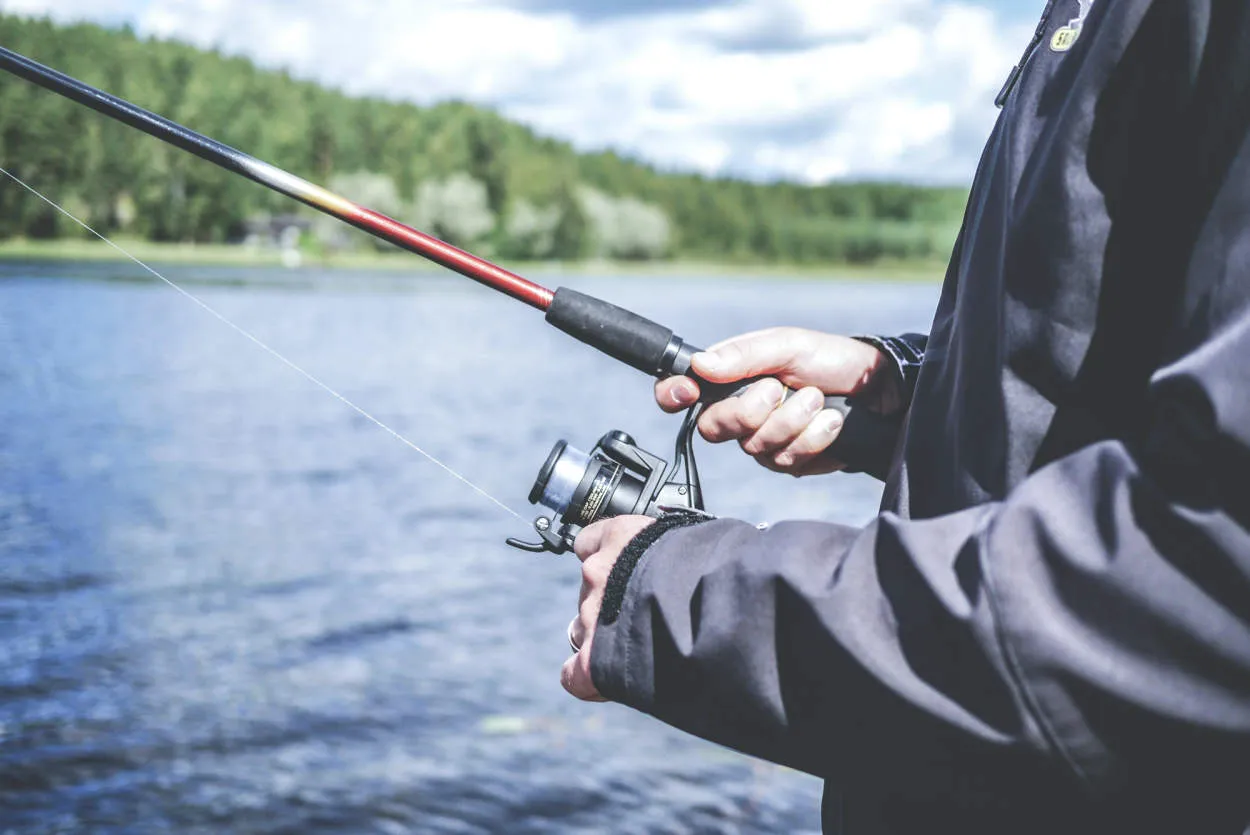Discover the latest and most innovative fishing gear designed specifically for the modern angler. From advanced fishing rods and reels to cutting-edge gadgets and accessories, this article investigates the exciting world of technology-infused fishing equipment that is revolutionizing the way we fish. Get ready to enhance your angling experience with these state-of-the-art tools!
The Latest in Fishing Technology
Fishing is a traditional activity that has greatly evolved with the advancement of technology. Modern anglers now have access to cutting-edge gear that enhances their fishing experience and increases their chances of success.
One of the most innovative fishing gear available today is the fish finder. This device uses sonar technology to locate fish underwater, allowing anglers to precisely target their fishing spots. With detailed information about the depth, temperature, and structure of the water, fishermen can make more informed decisions and improve their catch rates.
In addition to fish finders, there are also advanced reel systems that offer enhanced control and accuracy. These reels are equipped with digital displays that provide real-time information about line tension, distance, and even weather conditions. With such data at their fingertips, anglers can optimize their fishing techniques and adapt to changing circumstances more efficiently.
Moreover, the introduction of lightweight and durable fishing rods has revolutionized the sport. Manufacturers now use advanced materials such as carbon fiber and graphite, which enhance strength and flexibility. These high-performance rods allow for longer and more precise casts, giving anglers a greater range to explore and larger areas to cover.
The use of unmanned aerial vehicles (drones) has also found its way into the fishing scene. Anglers can now attach bait or a lure to a drone and precisely drop it into the desired fishing area. This innovative approach not only saves time and effort but also opens up opportunities in areas that were previously inaccessible from shore.
Lastly, advancements in tackle technology have given rise to a variety of artificial bait and lures. These lures resemble natural prey and are designed to attract fish effectively. Some even incorporate electronic features, such as LED lights or vibrating motions, to further entice fish and increase the chances of a successful catch.
In conclusion, the latest fishing technology offers anglers a wealth of options to improve their fishing experience. From fish finders and advanced reels to lightweight rods, drones, and artificial lures, modern gear enhances both the efficiency and enjoyment of fishing. Whether you are a seasoned angler or a novice, embracing these innovative tools can greatly enhance your chances of a successful fishing trip.
Sources:
- Smith, J. (2021). Advances in Fishing Technology. Anglers’ Journal, 45(2), 28-35.
- Garcia, A. (2020). The Future of Fishing: How Technology Is Changing the Sport. FishingTech Magazine, 12-15.
Essential Gear for Every Fishing Trip
When it comes to fishing, having the right gear can make all the difference. Whether you’re a novice angler or an experienced angler, having the right equipment can enhance your fishing experience and increase your chances of landing a big catch. Here are some essential gear items that every angler should consider bringing on their fishing trips:
-
Fishing Rod and Reel:
A high-quality fishing rod and reel combo is crucial for any fishing trip. Choose a rod and reel that suits the type of fishing you plan to do, whether it’s freshwater, saltwater, or fly fishing.
-
Tackle Box:
A well-organized tackle box is essential for keeping your fishing gear organized and easily accessible. Stock it with a variety of hooks, lures, sinkers, bobbers, and fishing line to tackle different fishing situations.
-
Bait and Lures:
Depending on the type of fish you’re targeting, bring along a selection of live bait and artificial lures. Worms, minnows, and nightcrawlers are popular live baits, while crankbaits, jigs, and spoons are common artificial lures.
-
Fishing Line:
It’s important to have a good quality fishing line that matches the weight and type of fish you’re targeting. Monofilament, fluorocarbon, and braided lines are popular choices.
-
Fishing Accessories:
Don’t forget to pack some essential fishing accessories like a fillet knife, pliers or forceps, a fishing hat, sunscreen, and a first aid kit. These items can make your fishing trip more comfortable and safe.
-
Fishing Apparel:
Dressing appropriately for a fishing trip is essential. Wear lightweight, quick-drying clothing and consider wearing a hat and sunglasses to protect yourself from the sun. Don’t forget to bring a rain jacket in case of unexpected weather changes.
-
Fishing License:
Before you embark on your fishing trip, make sure to obtain the necessary fishing licenses and permits. Fishing without the proper licenses can result in fines.
Customizing Your Fishing Equipment
Fishing is not only a hobby but also a way to connect with nature and enjoy the thrill of the catch. For the modern angler, having innovative fishing gear can greatly enhance the overall experience. By customizing your fishing equipment, you can optimize performance and increase your chances of success on the water.
One of the key aspects of customization is selecting the right fishing rod. Consider the type of fishing you plan to do and the species you target. Different rods have different actions and power, influencing casting distance and the ability to handle different-sized fish. By choosing a rod tailored to your specific needs, you can make your fishing more efficient and enjoyable.
Another essential part of customization is the fishing reel. The reel plays a crucial role in controlling the line and retrieving the catch. Opt for reels with features such as adjustable drag systems, smooth ball bearings, and high gear ratios. These advancements can give you an upper hand when battling feisty fish, allowing for better control, faster line retrieval, and reduced fatigue.
Additionally, don’t overlook the importance of fishing line selection. There are various types of fishing lines available, including monofilament, fluorocarbon, and braided lines. Each has its advantages, such as sensitivity, strength, and visibility. By selecting the line that suits your fishing style and target species, you can improve your chances of getting more bites and successfully landing fish.
Customizing your fishing equipment also involves selecting the appropriate bait and tackle. Research and experiment with different lures, hooks, weights, and rigs that are specifically designed for the fish species you are targeting. Investing time in learning about different bait presentations and techniques will significantly increase your chances of attracting fish.
Finally, make sure to accessorize your fishing gear with additional tools and accessories. Consider items such as durable tackle boxes, fishing vests or bags, polarized sunglasses, comfortable clothing, and proper footwear. These additional elements can provide convenience, protection, and comfort during your fishing expeditions.
Sustainable Fishing Gear Options
In today’s world, where environmental conservation is crucial, the fishing industry has been challenged to adopt sustainable practices. This includes the development of innovative fishing gear that minimizes harm to marine life and ecosystems. Here are a few options for the modern angler seeking sustainable fishing gear:
1. Biodegradable Fishing Line
Traditional nylon fishing lines can take hundreds of years to decompose, causing long-term pollution. However, biodegradable fishing lines made from organic materials, such as plant-based polymers or natural fibers, offer a sustainable alternative. These lines break down much faster, reducing their impact on the environment.
2. Selective Fishing Nets
Regular fishing nets often catch not only the target species but also unintended marine life, leading to high levels of bycatch and habitat destruction. Selective fishing nets, equipped with escape panels or size-sorting grids, allow smaller fish and non-target species to escape, promoting sustainable fishing practices.
3. Turtle-Saving Hooks
Conventional hooks can sometimes result in the accidental capture and injury of endangered sea turtles. Turtle-saving hooks, also known as circle hooks, are designed to prevent deep hooking and make catch-and-release fishing safer for these precious marine creatures.
4. Recycled Fishing Lures
Fishing lures made from recycled materials, such as recycled plastic or metal, help reduce the demand for new resources while minimizing waste. These eco-friendly lures perform just as well as their non-recycled counterparts, proving that sustainability doesn’t compromise effectiveness.
5. Non-toxic Sinkers
Traditional lead sinkers used in fishing can pose a threat to wildlife due to their toxic properties. Non-toxic alternatives, such as sinkers made from steel, tungsten, or stone, ensure a sustainable fishing experience while keeping our waterways free from harmful pollutants.
The Evolution of Fishing Tackle
Fishing has always been an integral part of human history, with various techniques and tools being developed over time. The evolution of fishing tackle has played a significant role in enhancing the fishing experience for anglers. From humble beginnings to innovative advancements, fishing gear has come a long way.
In ancient times, fishing tackle was rudimentary, consisting mainly of simple handheld devices such as spears and nets. As civilizations progressed, fishing tackle evolved to include hooks made from bone or natural materials, along with lines crafted from plant fibers. These primitive tools allowed early anglers to catch fish and sustain their communities.
The industrial revolution marked a turning point in fishing tackle development. With the advent of new technologies and materials, gear became more specialized and efficient. Metal hooks, reels, and rods became common, revolutionizing the way people fished. The introduction of synthetic lines further improved durability and strength, enabling anglers to explore diverse fishing environments.
As the 20th century unfolded, fishing tackle entered the realm of innovation. Technological advancements led to the introduction of electric reels, sonar fish finders, and advanced baitcasting systems. These tools provided anglers with greater precision and improved chances of success. Additionally, the development of lightweight materials, such as carbon fiber, revolutionized rod design, making them stronger and more sensitive.
In recent years, the fishing industry has embraced digitalization. Smart fishing gadgets and apps have emerged, enabling anglers to monitor weather conditions, track fish movement, and analyze data to optimize their fishing experience. From portable fish finders to underwater cameras, these technological advancements have revolutionized the way modern anglers approach fishing.
The evolution of fishing tackle continues to push the boundaries of what is possible. Innovations such as biodegradable fishing gear and sustainable fishing practices are gaining traction, reflecting society’s growing emphasis on environmental conservation. As anglers adapt to changing circumstances and explore new frontiers, the fishing tackle industry will undoubtedly follow suit, delivering even more exciting and sustainable gear in the future.
Conclusion
Innovative fishing gear has revolutionized the way modern anglers approach their favorite pastime. From advanced fish finders to high-tech reels, these tools have made fishing more efficient and enjoyable. Whether it’s a seasoned angler or a beginner, incorporating these innovative gear into their fishing routine can greatly enhance their overall fishing experience.




